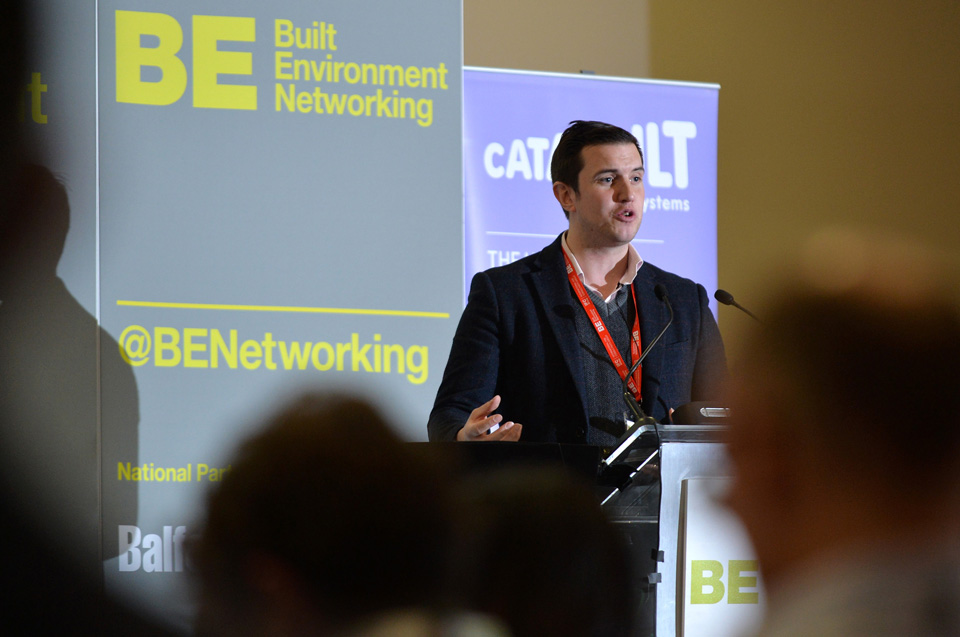
February 7, 2019
Built Environment Networking ran their Oxford Cambridge Corridor Development Conference last week to talk about redevelopment plans in the area.
The sprawling square in front of Milton Keynes Central railway station is being eyed up for a major upgrade.
Speaking at our Oxford Cambridge Corridor Development Conference Maria Curran, Placemaking Executive at the Milton Keynes Development Partnership (MKDP), said that Station Square has been identified as a ‘priority project’.
Whilst the square already contains a multi-modal interchange, it has ‘massive capacity’ to handle more passengers, she said, pointing out that it serves fewer passengers than that outside Cambridge station even thought its six times bigger.
As well as improving the multi-modal interchange, the square project aims to create a ‘positive impression’ of Milton Keynes by creating a new gateway for the new town.
The corporation is planning a fresh round of consultation before Easter, which will inform a design and development brief for the square: “This creates a challenge about how to balance the new town heritage with creating a place that is fit for purpose and enables and embraces future change.”
The development of the station square is part of a wider effort to reduce the car’s domination of central Milton Keynes, where the corporation owns about 90-ha. Curran said: “The centre of Milton Keynes is all about links and not about the place.”
The MKDP initiatives include creating a new ‘social heart’ for activities in the town at Midsummer Boulevard Place with Milton Keynes Council. In addition, the partnership is supporting the development of a large mixed-use office and private rented sector scheme, which will be centred around a new public square.
Outside of central Milton Keynes, she said that the partnership has secured planning permission at Kents Hill for 148 new homes and a 49-bed private hospital boasting four operating theatres.
A £14m state-of-the-art emergency blue light centre is due to be completed in the summer, which will in turn free up public land for other uses.

Ed Ellerington, Chief Executive Officer of Packaged Living, said scope exists for high rise development in Milton Keynes, but the town must encourage younger people to work in the surrounding corridor’s emerging tech economy by providing a more exciting mix of homes and amenities, he said: “If you go out on a Thursday in central Milton Keynes it’s not really happening. They don’t want to live somewhere that is dead.”
Packaged Living has identified Milton Keynes as one of the first towns and cities to roll out its build to rent portfolio, with their first region scheme containing 294 apartments that range in size from one to three bedrooms – due to be available in 2021.
The development also boasts a 240sqm restaurant, 967sqm of rooftop gardens and external amenity space as well as 740 sqm of internal amenity space including a residents dining room, gym, flexible community space, a library and guest suites
Mark Latham, Regeneration Director at Urban Splash, agreed with Ellerington that MK’s distinctive new town pattern of development could be intensified: “In Milton Keynes there is a heritage and a form of urban development that is respected and loved by some people but that can be changed to create an urban living that will attract young dynamic employees. People in knowledge industries like to get together. They don’t want to go home to their suburban homes, they need the opportunity to mingle.
He added: “It (MK) needs some intensifying but done in way that is sympathetic to the heritage of Milton Keynes and what is valuable about the place.”
Latham said that Urban Splash would roll out its range of new home types at Campbell Park which it is developing with the Places for People housing group. The company is currently developing its masterplan for the site with a view to submit applications for outline and detailed consent over the next year.

Emma Fletcher, Managing Director of SmithsonHill, warned that the growth of the area surrounding Cambridge is being held back by antiquated power infrastructure: “In the Cambridge area we have a World War 2 infrastructure put in for airbases that has been sweated to complete death. They (utilities) don’t have to provide electricity to anything that is speculative. Until you have a tenant, they are not legally obliged to supply electricity to that building.”
As a result, power companies are not putting in electricity infrastructure upfront, putting the onus ‘very much’ on developers or public bodies to deliver it instead, she said: “We need to get to grips with it quickly.”
Fletcher also called for the cycles of local plan preparation to become more responsive to innovative sectors like agri-tech sector, which had not even existed five years ago: “We need to be quicker about how we pick up these new things.”
She said that SmithsonHill’s Arc agri-tech scheme, which will accommodate up to 4,000 employees on about 1m sq ft-of development, would have its own new electricity sub-station.
She added that the development will accommodate natural features like existing hedgerows and create significant landscape buffers with existing communities.
Pippa Cheetham, Planning Director at Varsity Town Planning, warned delegates that planning hurdles risk the delivery of the corridor.
Master developer O&H is planning 5,000 homes in a series of interlinked villages, which are separated from each other and existing settlements by a string of parks, in Marston Valley.
The development will be built along a 6km stretch of navigable waterway, which will eventually link up the Grand Union canal and the River Ouse and create a sustainable urban drainage system to mitigate flood risks.
And she said the 120 has of tree cover, which will be either planted in the development areas or forming new woodland parks, complies with the local planning authority Central Bedfordshire’s requirement that 30% of the site should be woodland.
But despite tailoring the mix of homes to Central Bedfordshire’s assessment of local housing needs, the development still faced heavy opposition from existing residents, Cheetham said: “Even with this bespoke approach to housing delivery, we are struggling to move the rhetoric.”
Pointing out that the corridor needs another 195 similar scale developments to achieve the stated ambition of building 1m new homes by 2050, she said: “Navigating a planning application through the dynamic and evolving planning system is never straightforward. On paper we have a scheme that ticks so many boxes and O&H have a proven track record but we’ve not been able to convert the locals: the potential to delay delivery is great.”
Professor Sir Peter Gregson, Chief Executive and Vice-chancellor of Cranfield University, told delegates that the corridor’s tertiary education institutions had come together with their partners in business and government over the last three to four months.
Originally posted by Nathan Spencer of BE Networking in February 2019.
For more information on Packaged Living’s plans in Milton Keynes, click here.